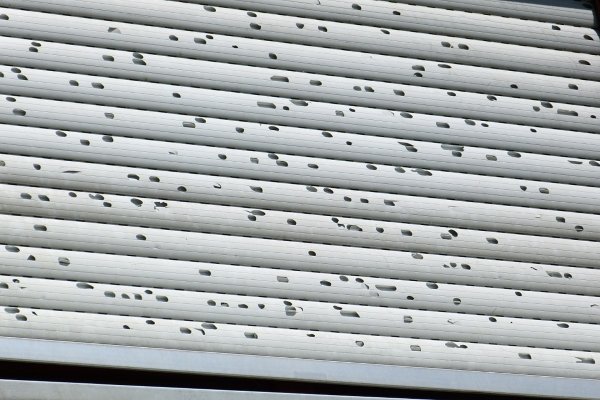
Once you hear the loud impact of ice hitting your roof, you know it's going to be a rough day. Hail damage is a Denver CO homeowner's nightmare. Repairs alone is expensive, but the risk of having to replace your roof completely due to extensive damage is highly likely. Hail damage claims can help relieve you of financial burdens, which make them excellent investments.
Unfortunately, insurers will most likely reject a claim right after hailstorms. Most of them will cite that "cosmetic" damages -- which only affect the appearance and not the functionality of your roof -- had occurred. Almost every Denver CO insurer will tell you they only provide coverage for "structural" roofing damage. To prevent confusion, McGarry And Madsen has an excellent explanation of the two terms.
What is the Difference Between Cosmetic & Structural Damages to Roofs?
“Hey, would you be sure to look at that crack in the wall of the back bedroom near the ceiling?” This is the kind of request we often get from customers at the beginning of a home inspection. Structural problems are right up there with roof leaks at the top of their list of big issues they hope we won’t find. Often enough, the crack is just cosmetic and not structural. But what makes a crack slide from cosmetic over to structural?
We like the definition of structural defect used by the U.S. Department of Housing and Urban Development (HUD) for their Ten-Year Protection Plans:
“The actual physical damage to the designated load-bearing portions of a home caused by failure of such load-bearing portions that affects their load-bearing functions to the extent that the home becomes unsafe, unsanitary, or otherwise unlivable. Load-bearing components for the purpose of defining structural defects are defined as follows: Footing and foundation systems; beams; girders; lintels; columns; load-bearing walls and partitions; roof framing systems; and floor systems, including basement slabs in homes constructed in designated areas containing expansive or collapsible soils.”
Structural Vs. Cosmetic Defect
That’s a lot of legalese, but it hits two key points:
- Defect is in “load-bearing portions of a home.”
- The defect causes the load-bearing components to become “unsafe, unsanitary, or otherwise unlivable.”
The HUD definition further clarifies what is NOT considered a structural defect, which includes damage of non-load-bearing components such as roofing, drywall and plaster, exterior siding, stone, brick or stucco veneer. (Continued)
If your roof only suffered a few dents, your insurer can get away with telling you it's not their port of call to provide benefits. However, how do you know if the damage is cosmetic or structural? You'll need to perform a personal inspection -- you'll have to head up the roof and conduct your own inspection.
Successful hail damage claims require in-depth inspections. Fortunately, they're not too difficult or complex to perform. Flash.org has a short yet effective roof hail damage inspection guide -- check it out here.
In-Depth Inspections for Hail Damage to Your Roof
When analyzing a roof for hail damage, it is important to differentiate between damage caused by hail and damage caused by natural weathering. Additionally, manufacturing defects, damage during construction and/or damage occurring during transportation can often look much like hail damage.Damage to asphalt shingles from hailstones is typically one of two types:
- Rupturing of the reinforcing mat
- Loss of granules that exposes the underlying bitumen.
Rupturing of the reinforcing mat represents a potential loss in the shingle's water-shedding ability in that a ply of roof covering is removed by the rupture. The loss in water-shedding ability increases the potential for water to reach the roof fasteners, causing corrosion or the butted joints in the sheathing, permitting water to enter the interior of the building. (Continued)
Now, how do you file for hail damage claims without getting rejected? You'll need great documentation. During inspection, take photographs of the damages. You can encircle the damages with chalk to illustrate them in the photographs.
For a great step-by-step, you can check out ClaimPro's short guide right below.
How to Start Your Hail Damage Claims for Benefits
Hailstorms create headaches for homeowners by causing damage to the roof, shingles, and other areas of a home. Hail damage may not always appear to be major or obvious, but even minor damage can shorten the life of your roofing, resulting in leaks that can cause even more damage in the future.
Because of this, it’s important to quickly identify and repair any hail damage. These do’s and don’ts will help you with filing a hail damage insurance claim to make the process easy.
What to DO When Filing a Hail Damage Insurance Claim
Do keep good documentation. Make sure to note the time and date of the damage, take photos of your home, including close up photos of the specific areas with hail damage. You can also contact the National Weather Service for a storm report, which includes information like the size of hail produced by the storm. If you’re home when the damage occurs, take photos of the hailstones on or around your home with a measuring tape next to them to show the size. Also, keep any estimates, invoices or receipts for any immediate materials or repairs. (Continued)
As the article above says, you don't have to feel like you have to use an insurer's referred contractor when you have the option to use local, reliable, and top-tier Denver CO contractorslocal, reliable, and top-tier Denver CO contractors. If you have yet to find one, you can depend on Roper Roofing to help. We've been servicing properties across Denver CO for more than 10 years. Talk to us today and let us help you with your hail damage claims.